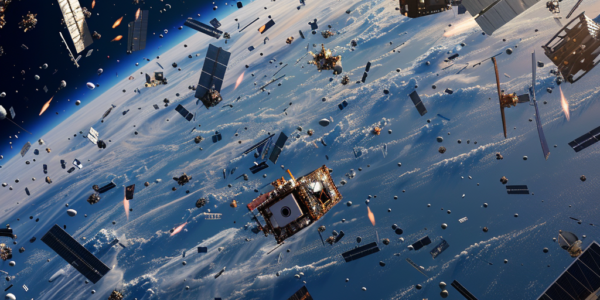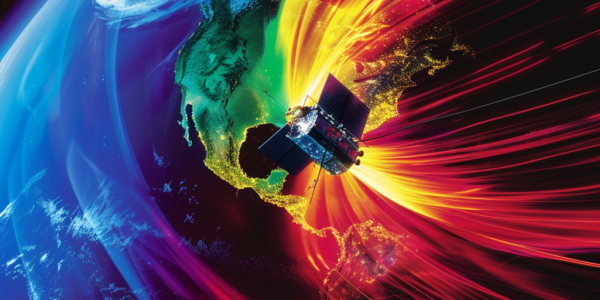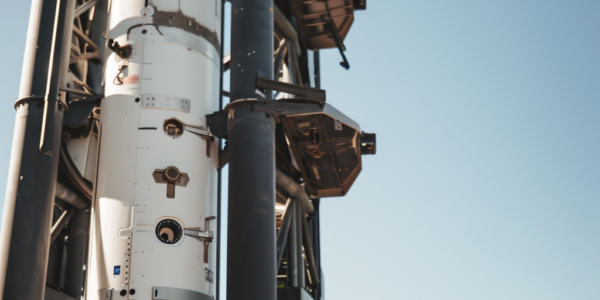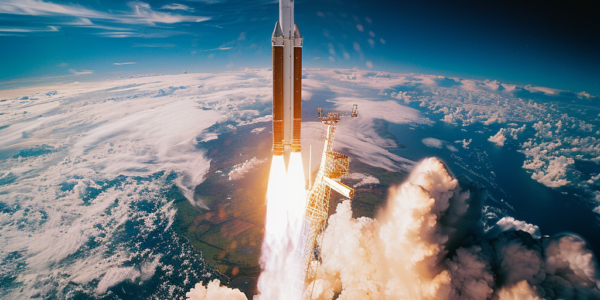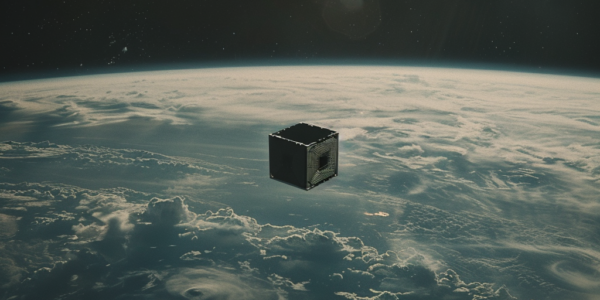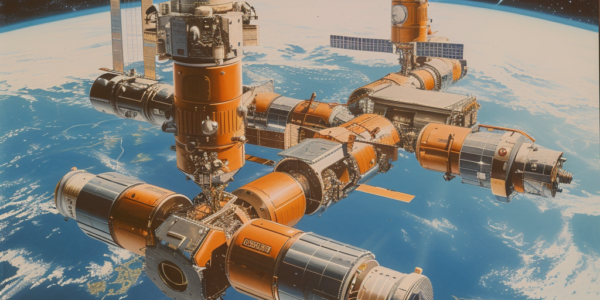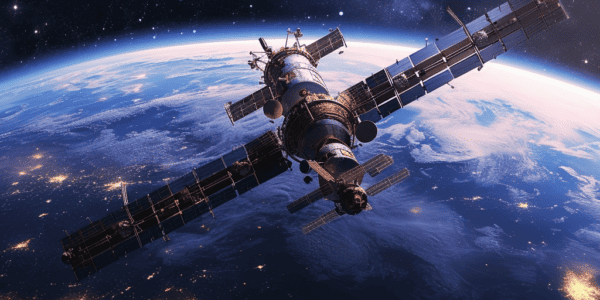Satellite Disposal and Environmental Concerns
SpaceX plans to dispose of 100 Starlink satellites due to a design flaw, raising concerns about the environmental impact of burning up satellites in the atmosphere. With the increasing congestion of low earth orbit, the space sector is prioritizing debris clearing and controlled re-entry of spacecraft to minimize environmental impact.
Mysterious Cloud Formation Over Gulf of Mexico Explained by Scientists
On January 30, 2024, NASA’s Terra satellite captured an intriguing cloud formation over the Gulf of Mexico, sparking debates about extraterrestrial activity. However, scientists have provided a grounded explanation, revealing that cavum clouds are the result of airplanes moving through altocumulus clouds. This scientific insight dispels the notion of otherworldly origins and offers a fascinating glimpse into the intricate processes at work within Earth’s atmosphere.
ESA Approves New Scout Satellites NanoMagSat and Tango
ESA has approved two new Scout satellites, NanoMagSat and Tango, to measure Earth’s magnetic field and greenhouse-gas emissions, respectively. These missions are part of ESA’s embrace of the New Space era and are designed to deliver value-added science through the miniaturization of existing space technologies or the demonstration of new observing techniques.
Unseenlabs to Expand Maritime Surveillance Constellation with Launch of 12th and 13th Nanosatellites
French maritime surveillance provider Unseenlabs is expanding its satellite constellation with the launch of its 12th and 13th nanosatellites, bringing the company halfway towards its goal of offering near-real-time maritime surveillance services by the end of 2025. The new satellites, BRO-12 and BRO-13, are set to be integrated and launched on a Falcon 9 from Vandenberg Space Force Base in California. Unseenlabs’ current network of 11 satellites can monitor and track signals from ships across the world’s oceans every four to six hours, providing valuable data for commercial and government customers. The company plans to launch a total of six satellites in 2024, with a proposed constellation of 25 satellites by 2025, enabling a revisit time of around 30 minutes over the same area to enhance its services for real-time environmental monitoring, rapid response to maritime disasters, and live tracking of pollutant emissions.
NASA Launches PACE Satellite to Study Oceans and Atmosphere
NASA has launched the PACE satellite to study the world’s oceans and atmosphere. The satellite, which stands for Plankton, Aerosol, Cloud, Ocean Ecosystem, will spend at least three years collecting data from an orbit 676 kilometers above the Earth’s surface. Scientists expect to start receiving data within one or two months, providing an unprecedented view of our home planet.
ESA’s ERS-2 Satellite Expected to Crash Back to Earth Next Week
The European Space Agency’s (ESA) ERS-2 satellite, retired since 2011, is expected to crash back to Earth between February 20-22, 2024. Despite the lack of precise control over its reentry, ESA is providing frequent updates on its predicted impact window. With an estimated weight of 5,057 pounds, the impending crash has sparked widespread attention due to its potential implications.
Contact Lost with Spacecraft Carrying Experimental Quantum Drive
Contact was lost with a satellite carrying an experimental quantum drive, leaving the test uninitiated and sparking skepticism about the controversial propellantless propulsion system. Despite the setback, the company behind the quantum drive plans to conduct further orbital tests, claiming improvements to the technology.
US Space Force to Establish Orbital Filling Stations for Satellite Refueling
The US Space Force is looking to establish orbital filling stations for its satellites, aiming to extend their mission life by refueling them in orbit. Northrop Grumman’s Passive Refueling Module (PRM) has been selected by the Space Force as the preferred model to set the standard for refueling satellites in orbit within the Space Systems Command (SSC). Satellites, with their high construction and launch costs, require propellant to function. Despite efforts to maximize their lifespan, the need for propellant remains a limiting factor. Many satellites require propellant to maintain their orientation, adjust orbits, and ensure operational efficiency. As a result, after a few years, satellites can become obsolete due to fuel depletion, despite being in good condition. To address this issue, companies like Northrop Grumman have been developing in-orbit servicing modules. These robotic spacecraft can dock with satellites running low on fuel, providing them with supplemental propulsion, new power sources, and even conducting minor repairs. The Space Force is particularly interested in this technology, as military satellites require frequent orbital shifts for various operational needs, making propulsion a critical asset. Refueling satellites in orbit presents challenges, requiring standardization to ensure compatibility between servicing modules and visiting satellites. This need for standardization has been a longstanding issue in space exploration, dating back to the Apollo Soyuz mission in 1975, which required a common docking mechanism for US and USSR spacecraft. The development of orbital filling stations and standardized refueling technology holds promise for extending the operational lifespan of satellites, offering a cost-effective solution for maintaining and enhancing satellite capabilities in orbit.
The Importance of Space Sustainability and Intelligent Technology in the New Era of Space Exploration
As we step into a new era of space exploration, the need for a framework for space sustainability becomes increasingly apparent. Professor Tshilidzi Marwala, the seventh Rector of the United Nations (UN) University and UN Under Secretary-General, emphasizes the importance…
NASA’s EMIT mission helps Turkmenistan pinpoint methane leaks
Covering the business and politics of space January 25, 2024 East of Hazar, Turkmenistan, a port city on the Caspian Sea, 12 plumes of methane stream westward. Some of the plumes, detected by NASA’s Earth Surface Mineral Dust Source Investigation…

